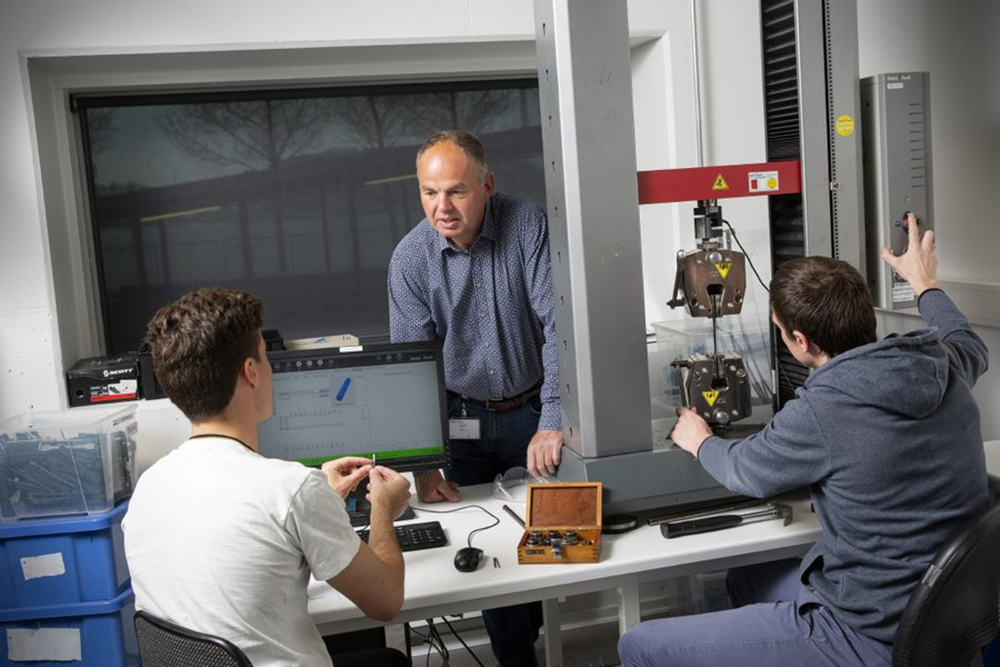
Only about five per cent of Danish companies have experience in industrial 3D metal printing, and small and medium-sized companies (SMEs) in particular are missing out on the growth potentials in this technology.
A new industrial 3D metal printing initiative launched at the Department of Mechanical and Production Engineering at Aarhus University, aims to help the business community unlock these potentials.
"3D metal printing has great potential in an industrial context, but for many companies it’s something of a blind spot. Perhaps they’re unclear about how they can make money from integrating 3D metal printing into their production processes, or perhaps they lack the right competences. SMEs in particular usually don’t have the resources to invest in a 3D metal printer, and therefore we want to help them to implement the technology without having to risk losing competitiveness," says Professor (Docent) Martin Heide Jørgensen, Department of Mechanical and Production Engineering.
In 2020, the department purchased an advanced 3D metal printer for the new technology initiative. It is located on the campus in Herning and integrated into the university’s Engineering Lab, where companies can conduct experimental activities and collaborate with researchers and students.
In the past, 3D metal printing technology has had some obvious weaknesses. The material costs have been high and production times have been relatively long, but both these issues look very different today.
"3D printing technologies are developing very quickly, and they’re here to stay. Today, metal printing can supplement traditional production tools, and the great advantage is that the technology is not limited by the geometry of an object. This gives companies design opportunities that were inconceivable just a few years ago. For example, it is now possible to print an object in titanium with the same material properties as if it had been forged," says Associate Professor Christian Perti.
He stresses that he does not expect companies to be able to reduce their production costs directly by implementing 3D metal printing. On the other hand, he expects that they will discover new opportunities for innovation and growth that will ultimately have a positive impact on the bottom line.
"Our goal is not to help companies save money in their production. We want them to discover the technology's potential and think about their business model in new ways. For example, they may find that they can achieve more efficient operations, new design capabilities, greater flexibility, shorter delivery times or lower stock levels," says Christian Perti.
Implementing 3D metal printing also results in new ways to save energy. The technology allows for production methods that can save material and create more energy-efficient products.
"For example, take a cogwheel for a gearbox. Today they are usually made of solid steel and designed as a massive disc with a hub and cogs. A 3D metal printer will save superfluous material, and you can dimension the inner porosities to enable a more optimal transfer of power from the cogs to the hub. However, the major benefits are where the technology can contribute entirely new functions, and we want to help companies to spot these," says Martin Heide Jørgensen.
He expects that many companies across industrial sectors will be interested in experimental collaboration on 3D metal printing.
"It’s a unique opportunity for companies to start experimenting with the technology and to experience the opportunities it offers because they are no longer limited by a particular geometric design or specific production tools. They may also see the potential in a higher degree of customisation for individual customers or shorter production times," says Martin Heide Jørgensen.
Depending on a company’s innovation needs and technological readiness, it can participate in project collaboration with students, teaching staff or engineering researchers from Aarhus University in Herning.
"The whole point of our initiative is to allow the business community to experiment with 3D metal printing in collaborative projects in which we can meet the companies on their own terms with a relevant level of knowledge. At the same time, our students will be able to work on some very topical industrial technology challenges," Martin Heide says.
As part of the initiative, the Department of Mechanical and Production Engineering has entered into collaboration with Herningsholm Business School, so that students on the industrial technician programme can become familiar with operating the metal printer.
3D metal printing is also a permanent part of the syllabus for the Bachelor of Engineering programme in mechanical engineering at Aarhus University Campus Herning.
The aim is to create a well-qualified recruitment base for companies at both technician and engineer levels.
Aarhus University collaborates with the Danish Advanced Manufacturing Research Centre DAMRC and Herning Business Council to promote 3D metal printing in the private sector.